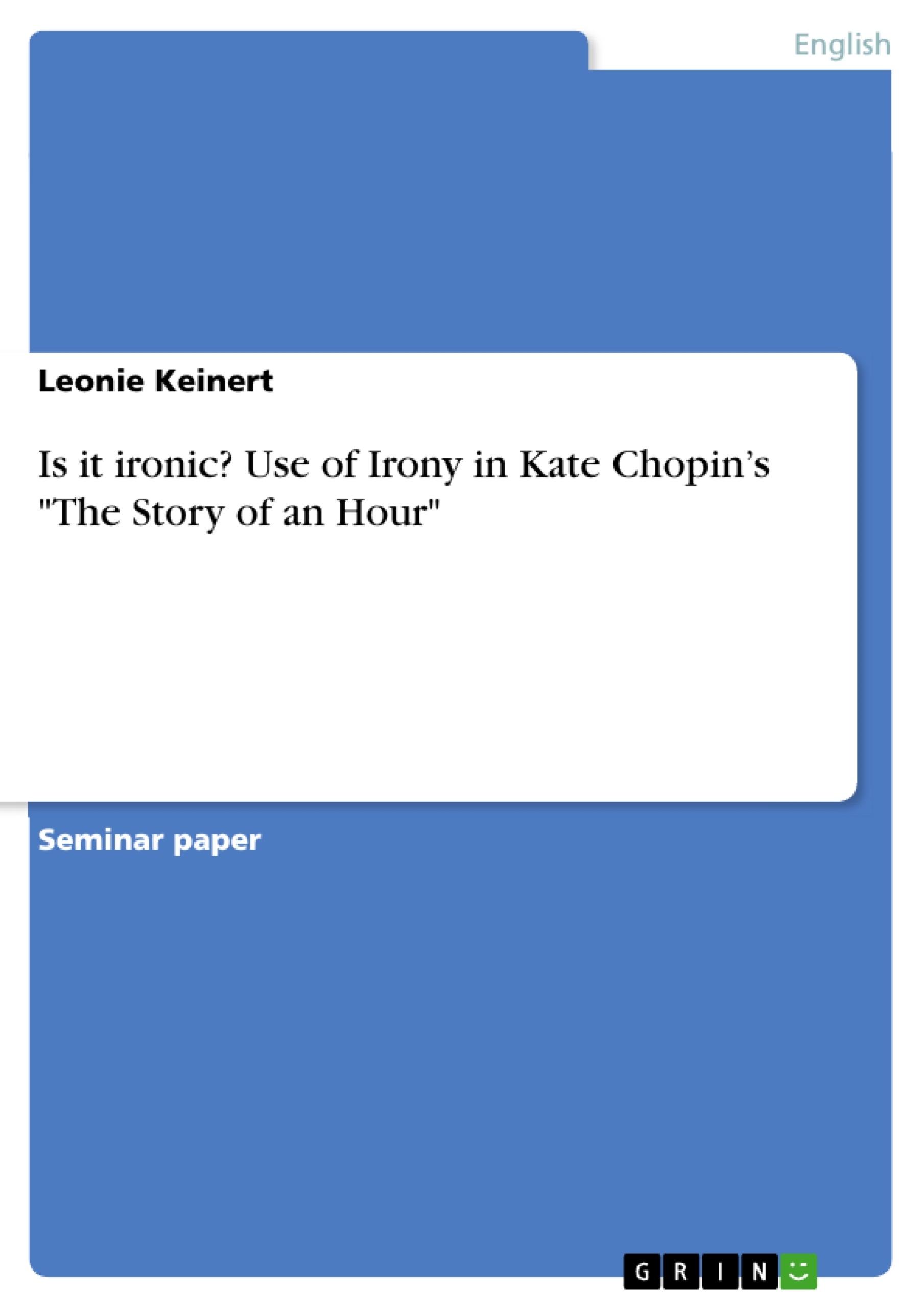"It’s ironic", is a statement certainly often proclaimed after reader Kate Chopin’s short story The Story of an Hour, but often it is not further dissected. After all, it is commonly expected one should know what irony is and how it works. But that might not always be the case. Surely, one needs a deeper understanding of the concept of irony to properly comment on it as a formal element. Interpreting ironies can be very enlightening as it deepens the understanding and meaning of texts as well.
In this paper first I am going to outline research done on irony, to define its specific criteria, different types of irony and how irony is detected and interpreted. Then, employing the knowledge about irony and its criteria, specifically focusing on Wayne C. Booth’s four steps of reconstruction, I am going to analyse the use of ironies in Kate Chopin’s The Story of an Hour. Finally, I am going to analyse how the ironies in the short story can be interpreted. All while arguing that the use of ironies in Kate Chopin’s The Story of an Hour help illustrate the reality of a 19th-century woman feeling trapped in her marriage.
Table of Contents
- Introduction
- Use of Irony in Kate Chopin's The Story of an Hour
- Defining irony
- Analysis: is it ironic?
- The effects of irony
- Conclusion
Objectives and Key Themes
This paper aims to analyze the use of irony in Kate Chopin's short story, "The Story of an Hour," and explore how it contributes to the understanding of the text. The paper will define irony, examine its different types, and discuss the interpretation of irony in literary works. The analysis will focus on identifying and interpreting the ironic elements in "The Story of an Hour" and demonstrating how they reveal the reality of a 19th-century woman's experience within a restrictive marriage.
- The definition and types of irony
- Analysis of irony in Kate Chopin's "The Story of an Hour"
- The interpretation of irony in literature
- The portrayal of women's experiences in 19th-century society
- The role of irony in shaping the reader's understanding of the text
Chapter Summaries
- Introduction: This chapter sets the stage for the analysis of irony in Kate Chopin's "The Story of an Hour," highlighting the common but often under-examined use of irony in the story. It introduces the concept of irony and its importance for understanding the deeper meanings within texts.
- Use of Irony in Kate Chopin's The Story of an Hour: This section dives deeper into the concept of irony. It defines irony and discusses its different types, drawing on various scholarly perspectives, including those of Cicero, Aristotle, and Quintilian. This chapter also presents Muecke's three central elements of irony and explores the distinction between verbal and situational irony, especially in the context of literature.
- Defining irony: This section further defines irony, exploring various perspectives and types, including traditional irony, situational irony, and the role of the ironist. It highlights the importance of shared cultural background and knowledge in understanding irony, particularly in cross-cultural communication.
- Analysis: is it ironic?: This chapter delves into the analysis of irony in "The Story of an Hour." It introduces Booth's four steps of reconstruction for identifying and interpreting stable irony, a method employed throughout the paper to analyze the story's ironic elements.
Keywords
This paper explores the concepts of irony, its various types, and its role in literary analysis. The key focus is on examining the use of irony in Kate Chopin's "The Story of an Hour" to uncover the story's underlying meanings and explore the themes of women's experiences and societal constraints within a 19th-century setting.
- Quote paper
- Leonie Keinert (Author), 2020, Is it ironic? Use of Irony in Kate Chopin’s "The Story of an Hour", Munich, GRIN Verlag, https://www.grin.com/document/1190687



